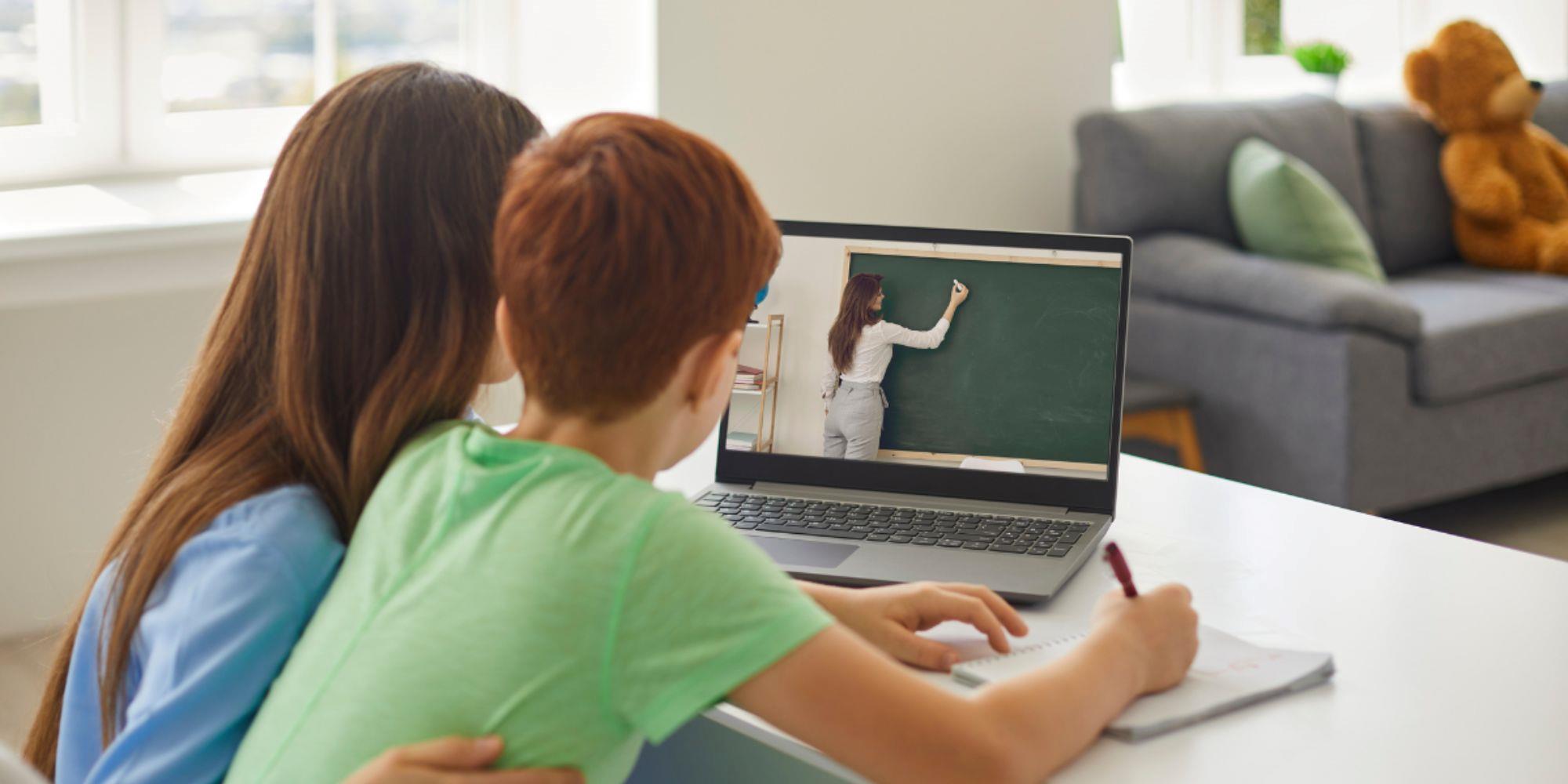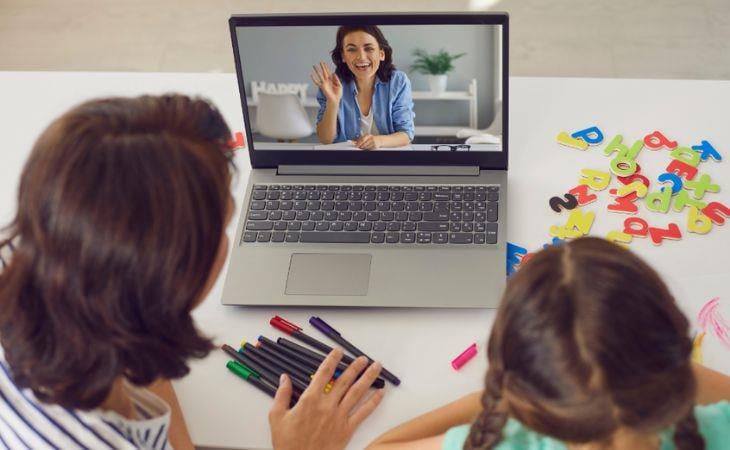
How to Use Digital Screens in Place for Better Communication with Parents
In today's fast-paced digital era, fostering effective communication between educators and parents is vital for creating a supportive educational environment. Digital screens offer a dynamic platform to revolutionize this interaction, but the key lies in strategic utilization.
By harnessing digital signage technology, educators can bridge the gap between school and home, ensuring timely updates and meaningful engagement. Implementing digital screens for parent communication goes beyond mere display; a deep understanding of the nuances can transform how educators connect with families.
Advantages of Utilizing Digital Screens for Parent Communication
Digital screens for parent communication provide unparalleled convenience, facilitating instant updates and real-time information sharing. Moreover, this cost-effective approach eliminates the need for traditional paper-based communication methods. Engaging parents in the learning process and offering a comprehensive view of their child's progress fosters greater involvement and understanding.
Seamless Convenience
Enhancing parent-school communication through digital screens offers a streamlined and efficient way to keep parents informed about their child's academic progress and school activities. Time-saving solutions are provided, as parents can easily access information without scheduling meetings or making phone calls. This convenience increases parent engagement by allowing them to stay updated regularly.
Cost-Effectiveness
In addition to the convenience offered by digital screens, the cost-effectiveness of this technology provides significant benefits for schools and families alike. Digital screens offer budget-friendly solutions, cost-efficient strategies, and affordable options. Schools can save on printing costs for newsletters and flyers, and families can benefit from reduced expenses related to paper-based communication materials.
Active Participation in the Learning Process
Engaging parents through digital screens fosters active involvement in their child's learning journey, creating a collaborative educational environment that enhances student success. Using digital screens to communicate learning progress, parents can stay informed about their child's achievements, challenges, and educational milestones.
Full View of Student Progress
Utilizing digital screens to communicate with parents offers a comprehensive overview of students' progress, facilitating informed parental involvement in their child's educational journey. Through digital platforms, parents can access real-time updates on their child's academic performance, behavior, and engagement in class.
Steps to Successfully Implement Digital Screens for Better Parent Communication
To set up digital screens for effective parent communication, follow a systematic approach. Begin by identifying the purpose and content, selecting appropriate hardware, choosing suitable software, designing engaging content, and finally, setting up the system for impactful communication.
Step 1: Identify Purpose and Content
Develop a robust content strategy aligned with communication goals. Understand the objectives to convey informative and engaging messages effectively and tailor content to facilitate better communication with parents.
Step 2: Select Hardware
Carefully choose the appropriate hardware, considering size, resolution, connectivity options, and durability. Evaluate screen options, display choices, and equipment decisions based on the intended content and location for maximum impact.
Step 3: Choose Software or Platform
Select suitable software or a platform considering user-friendliness, compatibility with hardware, and the ability to display various content types. Options include free digital signage software for schools, content management systems, and communication apps. Ensure seamless integration and customization features.
Step 4: Design Content
Design compelling and engaging content tailored to the school's messaging and objectives. Focus on visual appeal, incorporate engagement strategies, and use a mix of images, videos, text, and graphics for effective information delivery.
Step 5: Set Up the System
Strategically place digital screens in high-traffic areas for maximum visibility. Provide a troubleshooting guide for quick problem resolution, conduct regular maintenance checks, and offer thorough user training. Implement robust network security measures.
Step 6: Connect to Network
Establish a seamless connection to the network, addressing any connectivity issues promptly. Explore remote access options, implement robust network security measures, and assess network bandwidth requirements to optimize content delivery.
Step 7: Install Software and Configure Settings
Efficiently install software, configure settings, and customize screens to specific communication needs. Ensure platform integration, optimization, and effective content management for timely and relevant information delivery.
Step 8: Create Playlists and Schedule Content
Create playlists and schedule content effectively to ensure relevant and engaging information is displayed. Use scheduling software for automated updates, optimize display for visual appeal, and align content choices with the school's communication strategy.

Top Teacher-Parent Communication Tools for Digital Screens
Enhancing teacher-parent communication through digital screens involves utilizing tools like Rise Vision, Google Voice, Google Classroom, Remind, Seesaw, Canvas, Flipgrid, and ParentSquare. These platforms streamline information sharing, providing real-time updates, messaging capabilities, and easy resource sharing for a more efficient and transparent relationship between educators and parents.
1. Rise Vision
Rise Vision offers an innovative digital platform for enhancing teacher-parent communication. With interactive displays and effective communication tools, this platform facilitates seamless interaction and information sharing, contributing to a strong partnership between teachers and parents.
2. Google Voice
Google Voice incorporates voice recognition technology for quick and accurate transcription of messages, facilitating efficient communication between educators and parents. It promotes real-time communication, allowing immediate feedback and clarification on important matters.
3. Google Classroom
Google Classroom provides a centralized platform for sharing classroom updates, student feedback, and digital resources. It streamlines information sharing between teachers and parents, enhancing parent engagement in their child's education.
4. Remind
Remind improves parent engagement by facilitating quick updates, homework reminders, and event notifications directly to parents' devices. This platform promotes strong communication strategies, ensuring important information reaches parents promptly.
5. Seesaw
Seesaw fosters effective teacher-parent communication by allowing parents to stay informed about their child's academic progress and daily activities. It enhances student engagement through real-time work sharing, promoting a collaborative relationship between educators and parents.
6. Canvas
Canvas elevates teacher-parent communication by providing real-time updates on student progress, assignments, and announcements. It enhances parent engagement by offering a direct window into their child's educational journey.
7. Flipgrid
Flipgrid promotes interactive engagement by allowing parents, teachers, and students to engage in video discussions and collaborate on various topics. It empowers students to voice their perspectives creatively, fostering a sense of ownership in their learning journey.
8. ParentSquare
ParentSquare facilitates seamless communication between teachers and parents through advanced communication strategies. It offers a real-time, user-friendly platform for sharing updates, classroom activities, and educational resources.
In Conclusion
Leveraging digital screens for parent communication significantly improves engagement and collaboration between schools and families. Effective communication strategies through digital screens enhance parent involvement, streamline information sharing, create a feedback loop for continuous improvement, and strengthen relationship building.
Digital screens offer a direct and efficient way to connect with parents, fostering a sense of partnership between home and school. Ultimately, utilizing digital screens for parent communication leads to increased parental involvement, better student outcomes, and a more supportive school community.
FAQs: Using Digital Screens for Better Parent Communication
Improving parent communication through technology is crucial. Explore different communication tools and apps to streamline interactions and make updates easily accessible for parents.
Q1: How can technology be used to communicate with parents effectively?
Digital screens offer efficient tools and platforms to enhance parent communication. Technology enables increased parental involvement through real-time updates on student progress and school activities. Communication strategies such as mobile apps, email notifications, and online portals provide convenient channels for sharing important information with parents.
Q2: What are the main communication tools for including parents in the educational process?
Various digital communication tools can significantly enhance parental engagement, including regular updates, newsletters, instant messaging, interactive platforms, video conferencing, and effective messaging. These tools create a cohesive and informed community, promoting a positive environment for parent involvement in their child's education.
Q3: What app do teachers use to communicate with parents?
One popular app used by teachers for effective parent communication is Remind. Remind allows teachers to send real-time messages to parents regarding classroom activities, assignments, and school events, fostering collaboration and creating a more supportive educational environment for students.
More From Our Blog
-

Optimizing School Announcements with Screen-Sharing Technology
In today’s fast-paced digital age, staying informed about school announcements has become more efficient thanks to screen-sharing technology. Forget about missed memos or ignored notices—this modern[…]
Read More -

How Effective is Digital Signage?
Digital signs are revolutionizing. That's the short answer. But if you're trying to convince leadership to invest in screens for your school hallways, hospital waiting areas, or manufacturing floor,[…]
Read More -

10+ Office Welcome Sign Ideas
Getting a welcome sign on your office display shouldn't take all afternoon. Rise Vision makes it pretty straightforward: pick a template, swap in your logo, and push it to your screen. Done. The[…]
Read More
Keep Your Displays Interesting – Pick New Templates Every Week!
Every week, we send template recommendations that will make you look great and improve your audience experience. And the best part, they save up to 16 hours of content creation time every week!
12,300+ Organizations Trust Rise Vision, You Can Too
Schedule a Free Demo
You deserve the #1 all-in-one platform for digital signage, screen sharing, and emergency alerts.



































